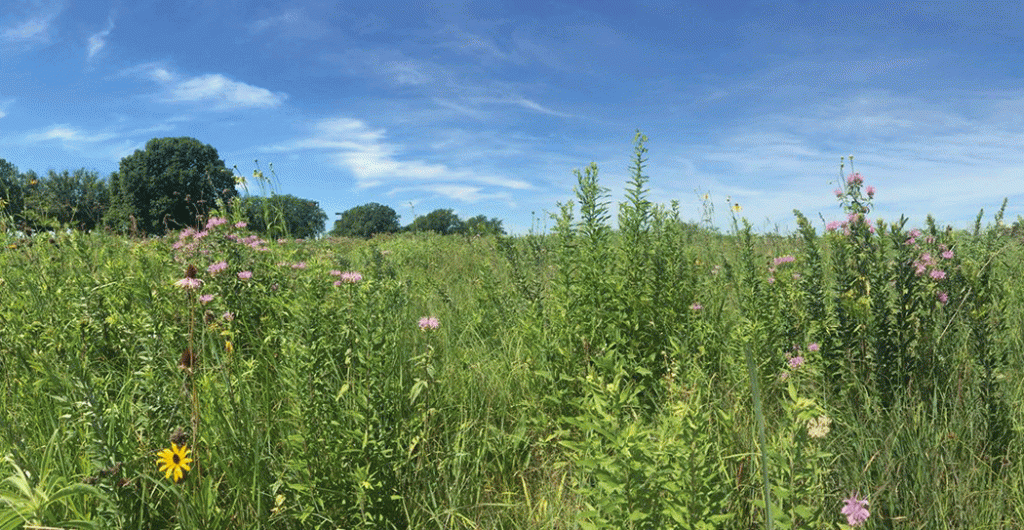
It would be interesting to pick John Deere’s mind today to see if he ever imagined that his invention would change the Iowa landscape so dramatically. Deere invented the plow in the early 1820s, and in 75 years, it altered the Iowa landscape forever. Back then, Iowa had roughly 30 million acres of prairie comprising native grasses, flowers, and shrubs, with an estimate of more than 300 native species on the landscape. By the early 1900s, nearly all the original prairie was gone.
Let’s fast forward to modern times, where there is less than one-tenth of one percent of the original prairie left in Iowa. What can we do to construct or restore prairies in Iowa? First and foremost, we need to understand the difference between “construction” and “restoration.”
Prairie Construction
Prairie construction starts with land that may or may not have been original prairie and adds native plants and seeds to create one. Even if the land was originally prairie, chances are that it is currently devoid of prairie species and may have cool-season European grasses like brome, fescue, and bluegrass growing on it. When non-native plants are growing where we want to construct a prairie, they need to be controlled (either by multiple tillage passes or herbicides) to give the prairie plants and seeds a fighting chance to establish themselves. New prairie plants or seedlings do not tolerate pressure from non-native plants in their first few growing seasons, so the preparation steps mentioned above are vitally important.
Prairie Restoration
When we are fortunate enough to have found original prairie in Iowa, prairie restoration is in order. Original prairie does exist in Iowa—along railroad right of ways, road ditches, timber edges, and natural areas. Most remnant prairies that we find today are usually difficult to identify because they are covered with cool-season grasses or brush. Many steps are required to rescue these degraded prairies, including cutting of non-native shrubs and brush, limited herbicide use, and prescribed fire to stimulate the dormant prairie plants and seeds.
Once the land is prepared, the next steps are locating a good native-seed vendor and picking a prairie plant mix that has abundant diversity and complements the soil. If the soil is sandy, choose drought-tolerant species, and if the soil tends to be wet, plant wet-tolerant species.
Stick With It!
Maintenance is key with prairie construction projects, whether it’s a small butterfly garden in your backyard with established plants or a larger one-acre planting of prairie seeds. Newly growing prairie plants do not like competition, so to help establish the prairie, hand weeding a small project or mowing a bigger project is necessary two to three times during the growing season.
When tackling a prairie project, make sure to not bite off more than you can chew! In the beginning, start off with small prairie projects to get a feel for them, then expand in the future.
Lastly, remember the three Ps of prairie construction or restoration: patience in year one, patience in year two, and patience in year three.
Kevin W. Andersen is an Iowa DNR Private Lands Biologist.
